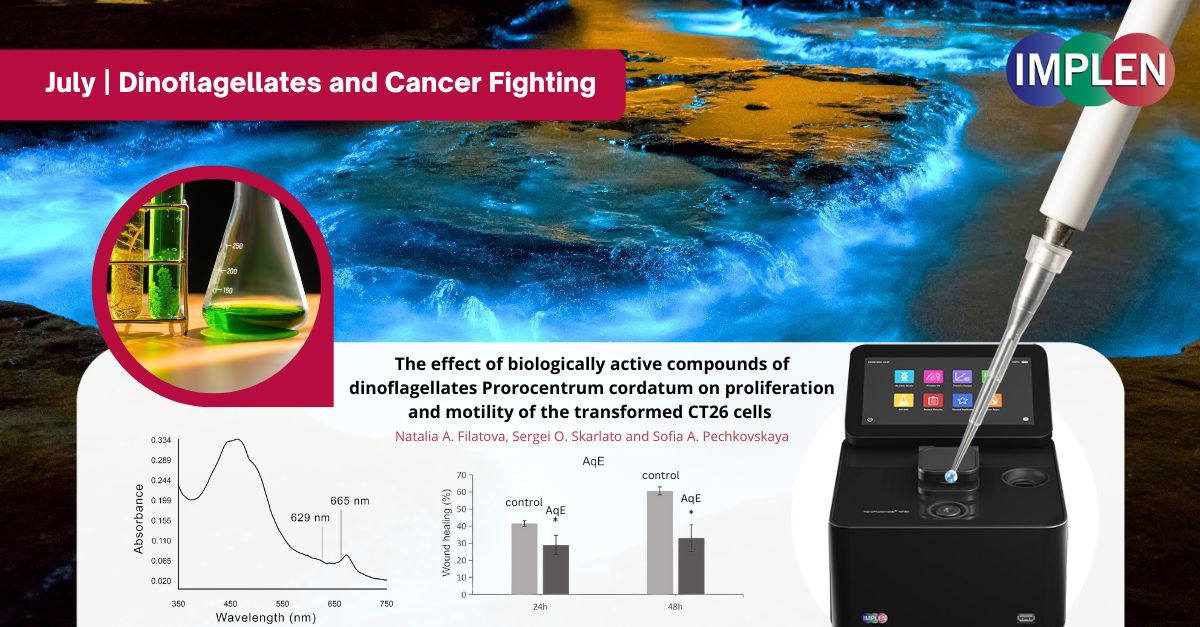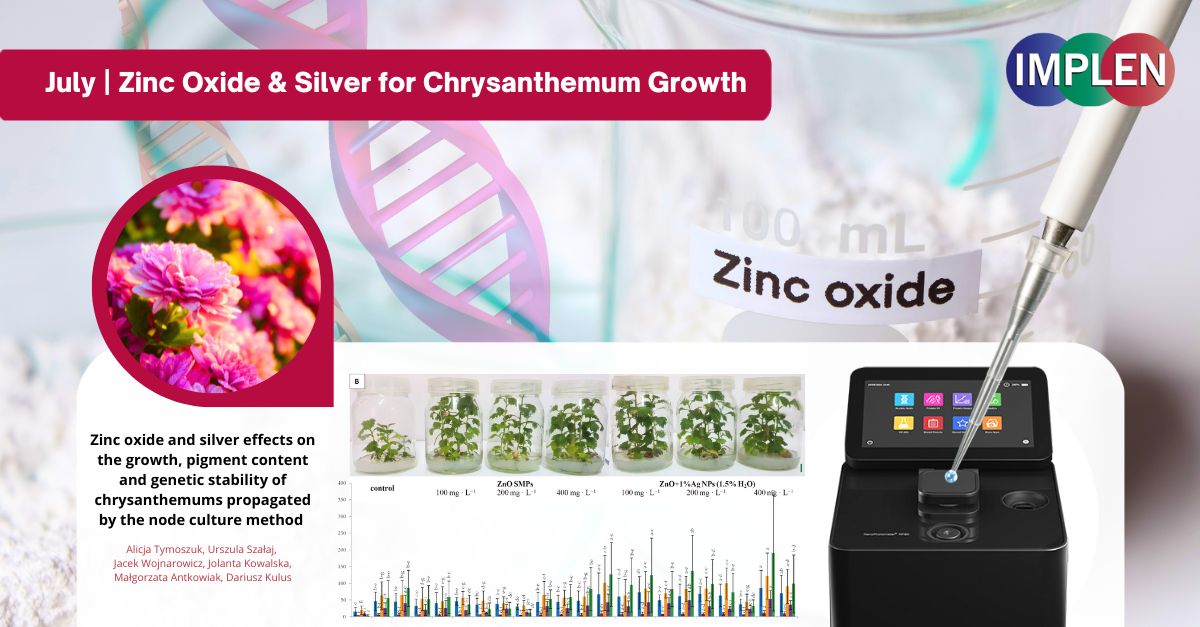Implen Journal Club | July Issue |
|
Unlock the Power of Berries: A Science-Backed Boost for Your 4th of JulyThe first issue of the Implen NanoPhotometer® Journal Club highlights a study that offers a compelling reason to incorporate berries into your 4th of July celebrations, showcasing their bioactive compounds' contributions to weight management and improved gut health. In the study by Minj et al., elderberry juice powder was shown to effectively prevent obesity and enhance gut health in mice. Mice on an elderberry-supplemented diet gained significantly less weight and had lower body fat compared to those on a standard high-fat diet. The elderberry diet also increased beneficial gut bacteria including Bifidobacterium and Akkermansia while reducing harmful bacteria such as Desulfovibrio, suggesting that elderberry juice powder exerts a potent anti-obesity effect through gut microbiota modulation. Beyond elderberries, other berries including strawberries, blueberries, black raspberries, and blackberries are also rich in anthocyanins, known for their anti-obesity and metabolic health benefits. These findings underscore the potential of berry-derived anthocyanins to support metabolic health and prevent obesity. The Implen NanoPhotometer® was used in this study for the quantification of DNA. |
|
Harnessing Light: Phototherapy's Impact on Rheumatoid Arthritis InflammationAs we embrace the sunshine of summer, it's intriguing to explore how light can heal. This week's Implen Nanophotometer Journal Club is showcasing a study by Calderón et al. that explored how phototherapy affects inflammation in rheumatoid arthritis (RA) patients. RA causes joint pain, swelling, and stiffness. Traditional treatments like NSAIDs and glucocorticoids can have side effects, so new options are needed. This study involved ten women with RA who received phototherapy sessions ranging from daily to weekly for 1 to 3 months. The light therapy used specific wavelengths (425-650 nm) to target inflammation. Researchers measured inflammation markers in the blood, including ESR, CRP, and rheumatoid factor (RF), and cytokines in white blood cells using advanced techniques. They also assessed patients' quality of life and pain levels with various scales. Results showed that phototherapy significantly reduced ESR, CRP, and RF levels, indicating lower inflammation. Although TNF-α, a key inflammatory molecule, decreased, the change wasn’t statistically significant. Patients reported less pain and better function after treatment. Phototherapy appears to be a helpful additional treatment for RA, reducing inflammation and improving patient well-being. However, more research is needed due to the small number of participants and the absence of detailed disease activity measurements. The NanoPhotometer® was used in this study to quantify complementary DNA (cDNA). |
|
Uncovering Ocean's Hidden Cancer Fighters: Breakthrough in Marine Dinoflagellate ResearchOur next issue is diving into the summer ocean vibes as scientists uncover powerful cancer-fighting compounds hidden in the ocean's vibrant dinoflagellates. The study, published by Filatova et al., examined how compounds from the marine dinoflagellate Prorocentrum cordatum impact CT26 cancer cells, focusing on their growth and movement. Researchers explored two extracts: ethanol (EtE) and aqueous (AqE). EtE contained pigments like peridinin and chlorophylls, while AqE was protein-rich. AqE significantly reduced cell viability with an IC50 of 2.4 µg/mL, making it highly effective. EtE had a higher IC50 of 374.9 µg/mL, indicating lower toxicity. Flow cytometry showed that EtE caused cells to halt in the S phase of the cell cycle, but AqE had no significant effect. Neither extract induced cell death (apoptosis). Both extracts reduced cell movement, as shown by slower wound closure in scratch assays. The study concluded that extracts from P. cordatum, particularly EtE, have promising antitumor properties, affecting cell growth and movement without high toxicity. These marine samples were obtained from the Culture Collection of Algae and Protozoa at the Scottish Marine Institute in Oban, UK. P. cordatum is found in ocean environments, not in freshwater lakes or rivers. This groundbreaking research highlights the potential of marine dinoflagellates in developing new cancer treatments, showcasing the ocean's hidden treasures in the fight against cancer. Stay tuned for more updates on this exciting discovery. The NanoPhotometer® NP80 was used in this study for the analysis of the absorption spectrum for total pigment extracts from P. cordatum cells. This was conducted at room temperature, covering a wavelength range of 350–750 nm. For AqE, the protein concentrations were determined by employing the standard Bradford assay at 595 nm. |
|
Enhancing Chrysanthemum Growth: The Impact of Zinc Oxide and Silver NanoparticlesJust like sunscreen protects our skin in the summer, using zinc oxide and silver nanoparticles can significantly boost the growth and stability of chrysanthemums.This week’s Implen NanoPhotometer Journal Club is highlighting a recent study by Tymoszuk et. al. that explored the effects of these nanoparticles on chrysanthemums grown in the lab. This study investigated two types of chrysanthemums, 'UTP Burgundy Gold' and 'UTP Pinky Gold', and applied different concentrations of zinc oxide (ZnO) and zinc oxide combined with silver nanoparticles (ZnO + Ag NPs). The results showed notable improvements in plant growth. In addition to enhanced leaf and root development, the treated plants exhibited larger leaf areas, perimeters, and widths. Although the chlorophyll and carotenoid levels in treated plants were generally lower than in untreated plants, genetic tests using RAPD and SCoT markers confirmed that the treated plants remained genetically stable. These findings suggest that using zinc oxide and silver nanoparticles can be highly beneficial for large-scale commercial production of chrysanthemums. This innovative approach combines the advancements of nanotechnology and biotechnology to improve chrysanthemum micropropagation, making it a promising solution for the horticulture industry. The NanoPhotometer® NP80 was used to perform spectrophotometric analysis at specific wavelengths (λmax): for chlorophylls a and b at 645 nm and 662 nm, respectively, and for carotenoids at 470 nm. The content of the plant pigments was calculated in mg per 1 g of sample fresh weight (mg · g−1 FW). The NP80 was also used to measure DNA concentration. |
|
How Gut Bacteria Could Boost Olympians' PerformanceAs the Olympics kick off in Paris, athletes from around the world are pushing their limits to achieve peak performance. This week’s Implen NanoPhotometer Journal Club: Summer Olympics Edition is showcasing intriguing research by Zhang et. al. that sheds light on a potential ally in their quest for gold: a gut bacterium called Veillonella dispar. Found in the human mouth and gut, this anaerobic bacterium plays a crucial role in converting lactate, produced in large quantities during intense exercise, into short-chain fatty acids (SCFAs) like acetate and propionate, which are beneficial to human health. This study revealed that Veillonella dispar adjusts its metabolism significantly when nutrients are limited, a condition that simulates the gut environment of an athlete post-exercise. Initially, the bacterium reduces lactate breakdown and propionate production, but later it partially restores these functions. This metabolic reprogramming helps maintain a stable gut environment by altering the ratio of key metabolites like propionate and acetate and decreasing pyruvate secretion. This metabolic flexibility is especially relevant for Olympians. The higher levels of Veillonella found in the guts of elite athletes can convert excess lactate into SCFAs, potentially enhancing recovery and performance. With this understanding, athletes can focus on nutritional strategies that support their gut microbiota, optimizing their performance during the intense competition in Paris. As the world watches these remarkable athletes compete, it's fascinating to consider how tiny gut bacteria like Veillonella dispar might be contributing to their success, making this Olympics not just a showcase of human excellence but also a testament to the intricate interplay between our bodies and the microorganisms within us. The NanoPhotometer® was used in this study to determine the purity and integrity of RNA. |
©2024 Implen. All rights reserved.




